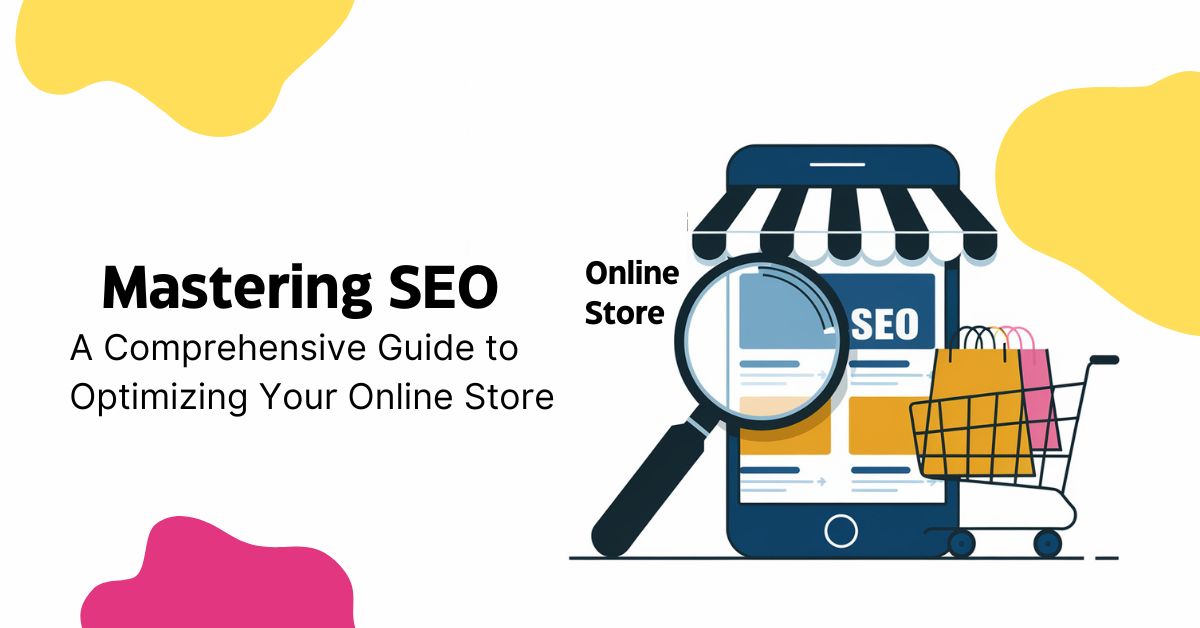How to Optimize Your Online Store for SEO
In the digital age, running an online store is an essential way to reach customers and grow your business. However, even the most attractive and user-friendly online store can fall into obscurity if it isn’t optimized for search engines. Effective search engine optimization (SEO) is crucial to ensure that potential customers can find you. This blog post aims to provide actionable strategies to optimize your online store for better search engine rankings.
Understanding SEO Basics for E-commerce
Before diving into the specifics, it’s important to grasp what SEO entails. SEO, or Search Engine Optimization, is the practice of enhancing your online content to increase its visibility on search engine results pages (SERPs). SEO is crucial for online businesses because it directly affects how easily potential customers can discover your products. Unlike blogs or informational websites, e-commerce platforms face unique challenges, such as large inventories and dynamic content, which require tailored SEO strategies. Learn how to optimize your online store for SEO to ensure that your site stands out from the competition.
On-Page SEO for Online Stores
On-page SEO refers to the practices you employ directly on your website to improve its search rankings. For online stores, this involves several critical elements.
Keyword Research for Online Stores
The foundation of any SEO strategy is effective keyword research. Finding the right keywords means discovering search terms that your potential customers are typing into Google. Use tools like Google Keyword Planner, SEMrush, or Ahrefs to identify relevant keywords with an optimal combination of search volume and difficulty. For example, if your store sells handmade jewelry, you might find that terms like “artisan rings” or “custom necklaces” have good potential.
Optimizing Product Pages
Each product page is an opportunity to attract traffic and convert visitors into customers. Begin with crafting compelling titles and meta descriptions. These elements not only appear in search results but also influence click-through rates. The product description itself should be unique, informative, and sprinkled with keywords naturally. Always remember to highlight benefits rather than just features to engage and persuade potential buyers.
Creating SEO-Friendly URL Structures
A clean URL structure is not just user-friendly but also search-engine friendly. Avoid complex strings of numbers and symbols in your URLs. Instead, use descriptive keywords that accurately reflect the page content. For instance, a URL like “www.yourstore.com/product/red-leather-jacket” is preferable to “www.yourstore.com/product/42345.” This clarity helps search engines understand your site and increases the likelihood of users clicking on your link.
Effective Internal Linking Strategies
Internal linking refers to creating links between different pages within your online store. This practice helps search engines understand the structure of your site and distribute page authority. Use logical links that make sense in the context, like connecting category pages to related product pages or guiding users to blog posts for additional assistance.
Technical SEO for Online Stores
While on-page SEO focuses on visible content, technical SEO deals with how well your site is understood and crawled by search engines.
Site Speed Optimization
Site speed is a critical factor for both user experience and SEO. A slow-loading website can frustrate users and discourage them from engaging with your store. Ensure images are compressed to reduce load times, use browser caching, and work with an excellent hosting provider to handle the technical aspects. Google’s PageSpeed Insights is a valuable tool to identify and resolve issues affecting your site’s performance.
Ensuring Mobile-Friendliness
With the ever-growing penetration of mobile devices, a significant percentage of online shopping happens on smartphones and tablets. Responsive design is essential, ensuring that your website adapts seamlessly to various screen sizes. Google’s Mobile-Friendly Test tool can evaluate how mobile-friendly your site is and suggest improvements.
Utilizing XML Sitemaps and Robots.txt
XML sitemaps are files that list the pages on your website, aiding search engines in crawling and indexing your site effectively. Conversely, a robots.txt file tells search engines which pages or sections of your site should be avoided during crawling. Both tools are crucial for optimizing your online store for SEO. Ensure your sitemap is updated frequently with new content, and that your robots.txt file is properly configured to avoid accidental blockages of important pages.
Off-Page SEO Strategies
Off-page SEO extends beyond your website, involving techniques that bolster online reputation and authority to improve search rankings.
Building High-Quality Backlinks
Backlinks, or inbound links from other websites, signal to search engines that your content is authoritative and trustworthy. Focus on acquiring high-quality backlinks from reputable sites related to your niche. This can be achieved through guest blogging, collaborations, or engaging in forums where your target audience congregates.
Integrating Social Media for SEO
While social media links don’t directly boost search rankings, they increase the visibility of your content and contribute to off-page SEO indirectly. Create shareable content on social media platforms that drives traffic back to your online store. Social proof and the resulting engagement can positively impact how search engines perceive your site’s relevance.
Measuring and Monitoring SEO Performance
Optimizing your online store for SEO is not a one-time task; it’s an ongoing process. Utilize analytic tools like Google Analytics and Google Search Console to track your SEO efforts. Monitor key metrics such as organic traffic, bounce rate, and conversion rates to gauge your strategy’s effectiveness. Regularly reviewing these metrics will reveal which techniques are working and highlight areas needing improvement.
Conclusion
Implementing an effective SEO strategy is essential for the success of any online store. From keyword research to technical optimization and continuous performance monitoring, every aspect plays a vital role in enhancing your site’s visibility. As the digital landscape evolves, staying informed and flexible is key to maintaining and improving your search engine rankings. Take the first step today and start optimizing your online store for SEO, turning clicks into loyal customers.
FAQs
**1. Why is SEO important for online stores?**
SEO helps increase the visibility of your online store in search engines, attracting organic traffic and converting visitors into customers.
**2. How long does it take to see results from SEO?**
SEO is a long-term strategy. Initial results can appear in 3 to 6 months, but it’s common to see significant benefits after a year of consistent efforts.
**3. Can I do SEO myself, or should I hire a professional?**
While it’s possible to learn and implement SEO strategies yourself, hiring a professional can streamline the process and address more technical issues effectively.
In conclusion, optimizing your online store for SEO involves a targeted approach across multiple elements. By understanding and applying the strategies outlined in this guide, you can enhance your website’s ranking and attract more potential customers.







